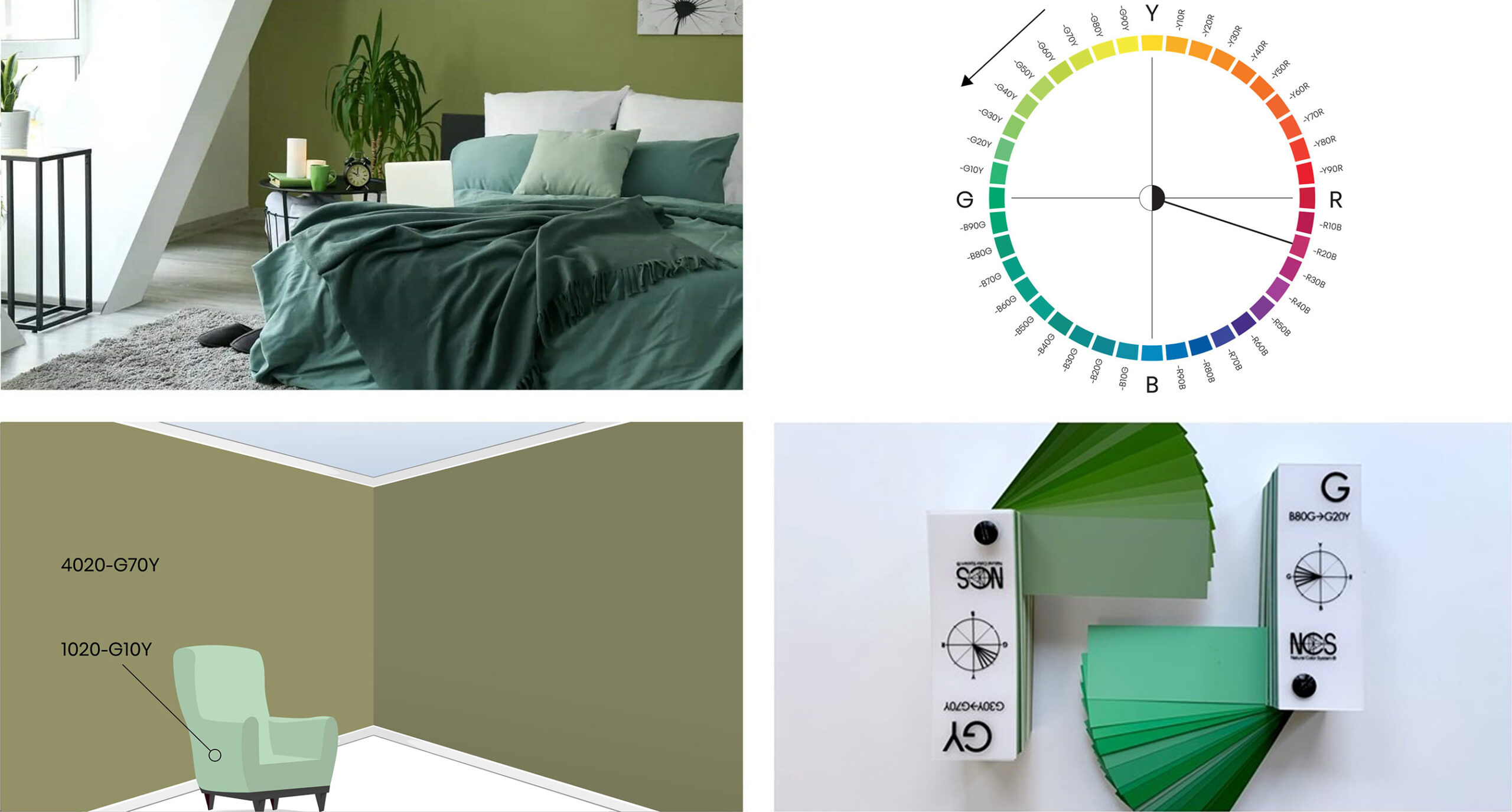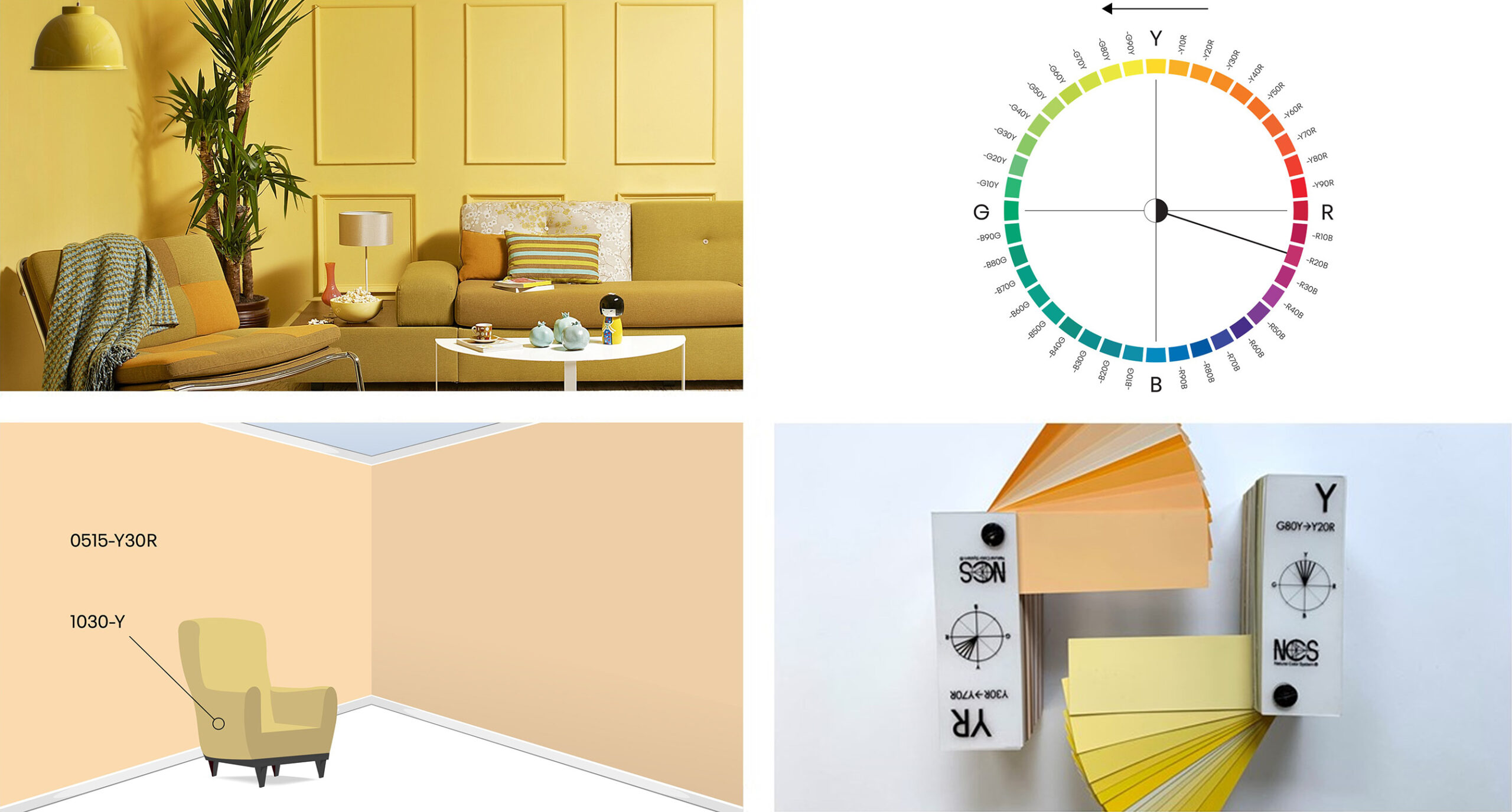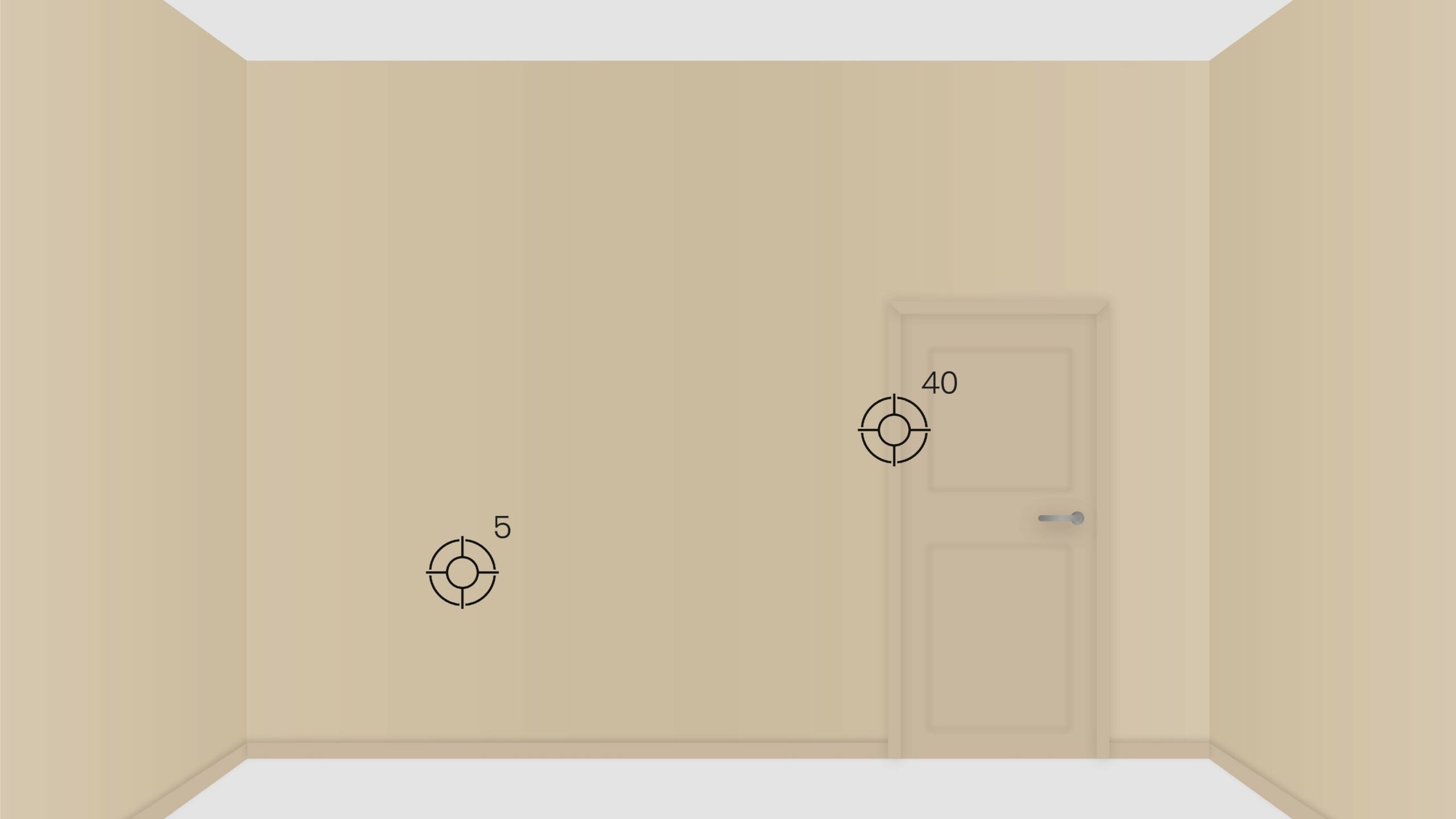Back to Course
19. NCS in kitchen studios II
0% Complete
0/0 Steps
Lesson 3 of 4
In Progress
Interior design principles Part 2
Surrounding colors
To get a better understanding on how your color will look on the wall, a guideline is to always put your color sample on a white or light grey background. But if you are painting a room that has a lot of dark surrounding colors, a good idea is to check on a black background as well to see how the color looks.
When it comes to surrounding colors, it is very important to understand that the surrounding colors push the perception of your color. To understand how this works in relation to interior color design, let us look at some examples. (You can also revisit the video in the activity Interior design principles -1, where we go through simultaneous contrast in detail).
To put it simply, simultaneous contrast means that your color will be perceived as more/less blackish or whiteish, more/less chromatic – even as a completely different hue – depending on its surrounding colors. The surrounding color will reinforce color differences. So, if you placed a blue-green pillow in a bed with green colored wall with yellow in it, the pillow will be perceived more blueish.
In this first case we see that a green color together with other green colors looks blueish since that color has less yellowness in it than the others.
When it comes to surrounding colors, it is very important to understand that the surrounding colors push the perception of your color. To understand how this works in relation to interior color design, let us look at some examples. (You can also revisit the video in the activity Interior design principles -1, where we go through simultaneous contrast in detail).
To put it simply, simultaneous contrast means that your color will be perceived as more/less blackish or whiteish, more/less chromatic – even as a completely different hue – depending on its surrounding colors. The surrounding color will reinforce color differences. So, if you placed a blue-green pillow in a bed with green colored wall with yellow in it, the pillow will be perceived more blueish.
In this first case we see that a green color together with other green colors looks blueish since that color has less yellowness in it than the others.

In this second example we see that a yellow chair with less redness in it looks greenish in comparison to the more chromatic reddish yellow wall.

Gloss und Structure
Gloss and structure are very important to understand when guiding your customer to a new color in their space. The general rule that a color becomes darker and more chromatic when painted on the wall in relation to a color sample is something you understand by now. But the structure and gloss play a big role as well.
Structure
More structure means that the perception of the color is going to be darker. In the image below we illustrate that change. Rougher structure means more shadows and that will lead to a darker perception of the color. Keep this in mind when guiding your customer, always ask about the material they are painting. If it is a rougher material, guide them to a lighter nuance.

Gloss
Gloss is also changing the perception of a color, higher gloss level leads to in general a darker perception of the color. Let us say that you paint the woodwork and the wall in the same color, but the gloss level is higher for the woodwork. That will result in a darker perception of the color on the woodwork than the wall. Learn more about this in one of our cases.

